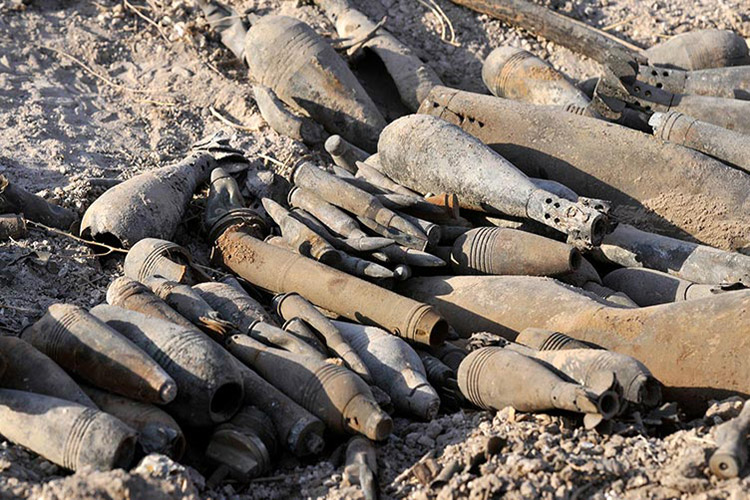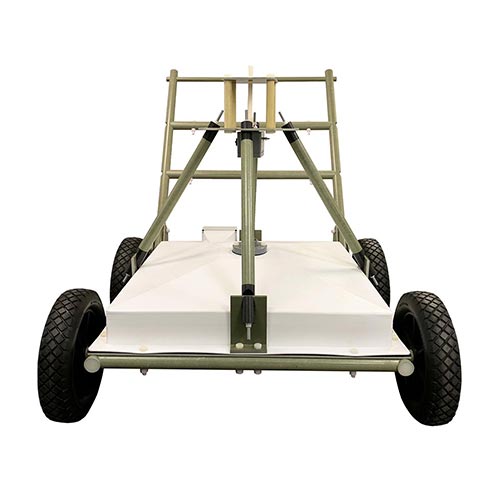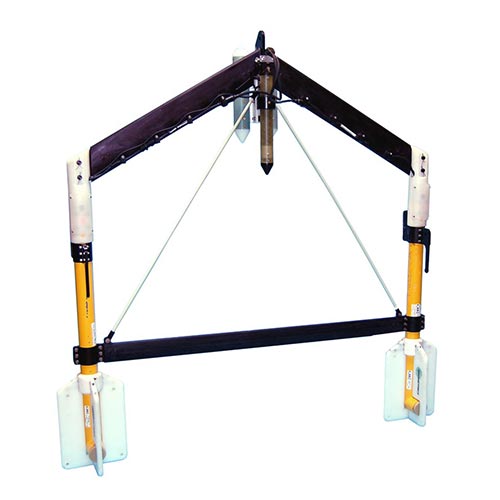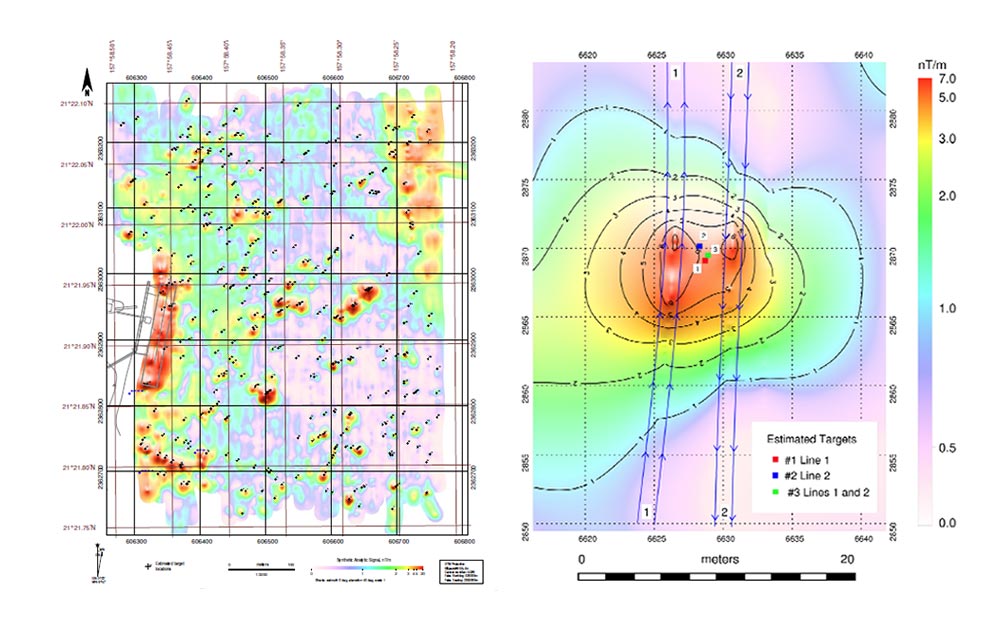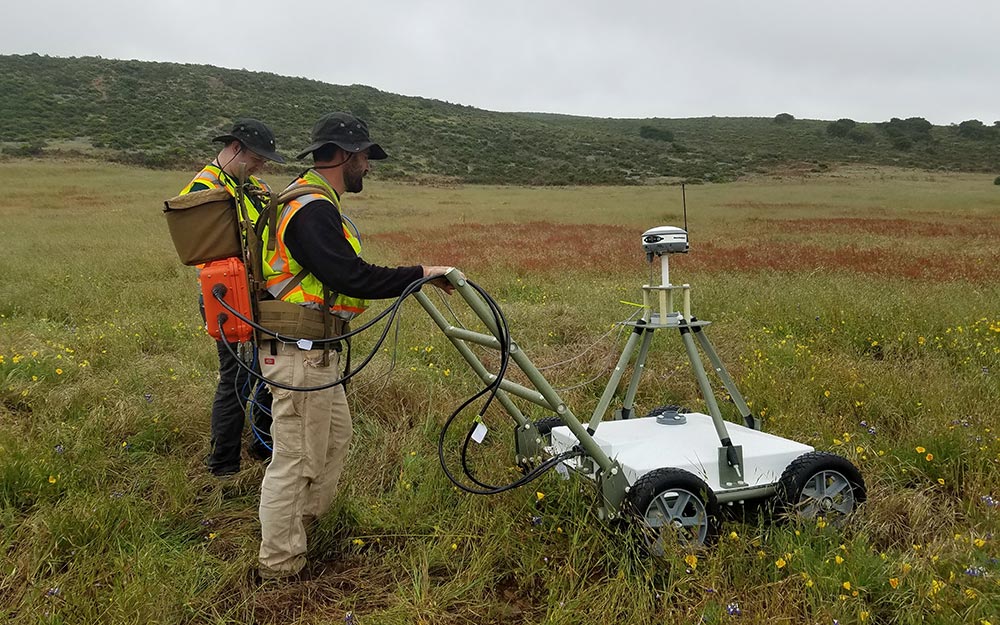
MetalMapper 2x2
Unexploded ordnance (UXO) is a major issue for governments and landowners around the world due to the safety issues associated with them and the high costs for remediation. The MetalMapper 2x2 is an advanced electromagnetic (EM) sensor which can detect UXO and classify buried metallic objects as either UXO or scrap metal. The innovative MetalMapper 2x2 has been developed by Geometrics in conjunction with government and other private organizations and could save billions of dollars in unexploded ordnance cleanup costs at former training ranges or battlefields.
Before the use of these advanced EM techniques, a munitions site was mapped with a metal detector and all detected metallic objects were investigated by digging. Previous studies show that less 1% of these objects were UXO items of interest. The majority of what was dug is scrap metal, bits of shrapnel, or trash. The advanced EM technique used by the MetalMapper 2x2 allows geophysicists to identify UXO targets of interest among the scrap, significantly reducing the number of items which are investigated by digging. This reduction in digging translates to a much safer, more economical, and quicker UXO cleanup project.
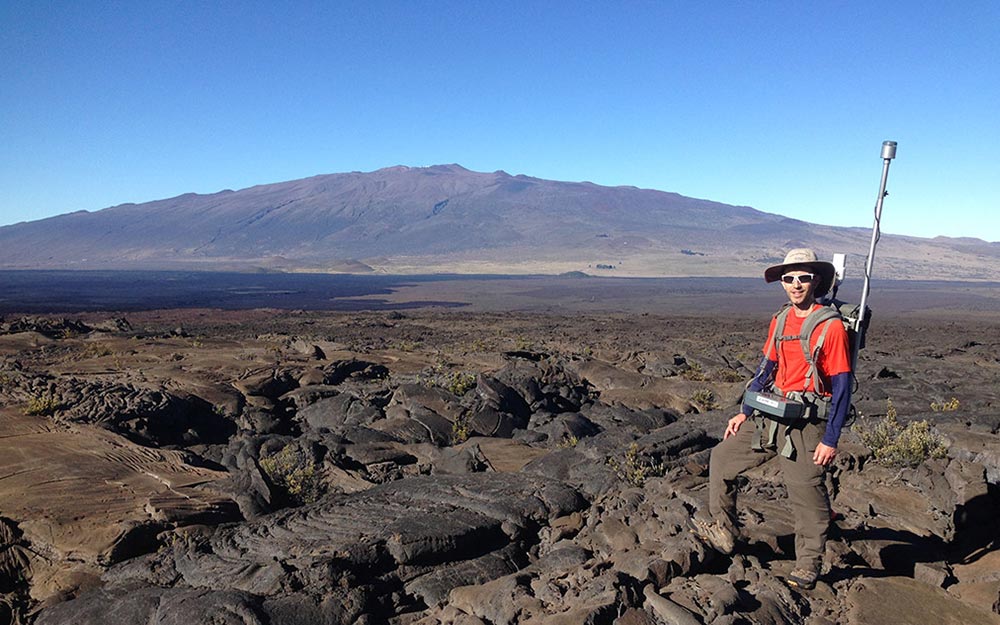
G-864 Magnetometer
Cesium vapor magnetometers can resolve changes in the magnetic field as small as 0.004nT while sampling at high rates. The high resolution and fast sample rate are important for unexploded ordnance (UXO) detection where ferrous targets may be small and a rapid survey speed reduces survey costs. Traditional handheld analog magnetometer surveys for UXO used only audible beeps and required operators to manually flag suspected targets, which may fail to capture all magnetic targets at a site.
With the G-864 Magnetometer, large areas can be rapidly surveyed. GPS-located magnetic data is stored for processing, ensuring that all targets in a given area can be located. The G-864 includes GPS navigation features which guide and ensure the operator gets full coverage of the survey area. High-quality magnetic data can be processed to detect all sizes of UXO, ranging in size from small arms rounds to large aerial bombs. The G-864 is the most advanced backpack magnetometer on the market for UXO surveys.
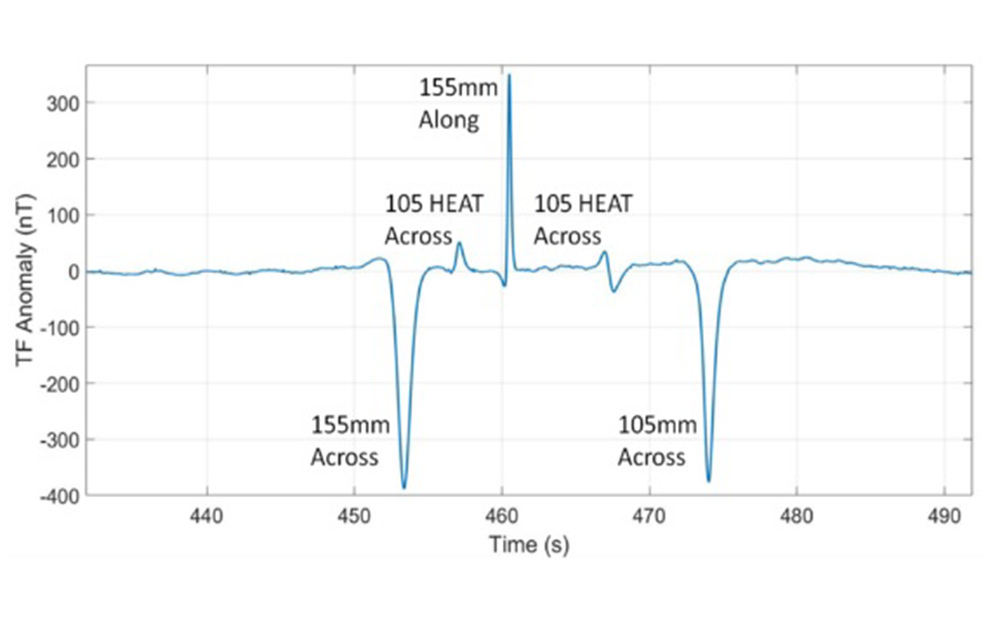
MagArrow Magnetometer
In most contexts, UXO are spread out over large areas, in no particular pattern, due to the original method of ordnance deployment. To most efficiently surveys these large regions of land which post a danger to people and property, the
MagArrow UAS-Enabled Magnetometer is the tool of choice. With its fast mode of transportation and revolutionary MFAM Magnetomer internals, the MagArrow is the best way to start a UXO job. Simply turn the MagArrow on and GPS-located magnetic data automatically starts to be collected and stored for processing. Built-in redundancies ensure that data is saved even in adverse situations, and that all targets in a given area can be located.
The above magnetic data was collected with the MagArrow. The MagArrow was flown over 4 UXO targets 5 meters above ground level. Strength of the anomalous magnetic field registered by the MagArrow depended on the orientation of the UXO relative to the MFAM sensor inside the MagArrow.
